9 de April de 2024
Upper Body Training for Basketball
What Should I Take into Account When Preparing an Upper Body Workout for basketball?
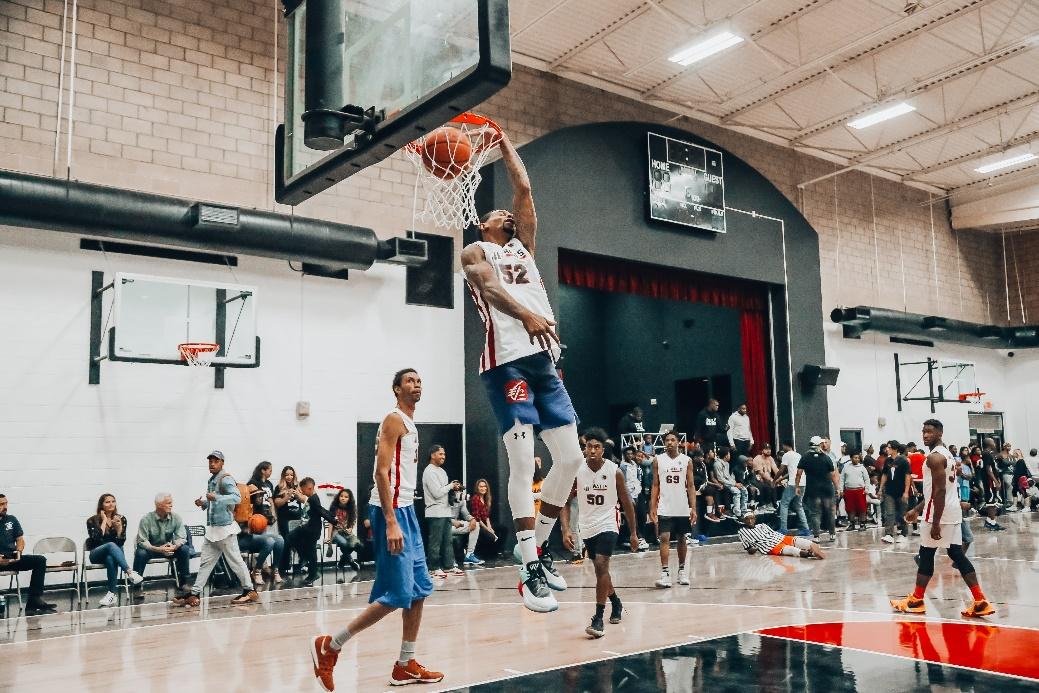
Basketball is a popular sport that requires technical, tactical, psychological, and physiological skills (Roman et al., 2009). Physical fitness, including velocity, strength, endurance, stamina, agility, and flexibility, as well as jumping, running, balance, and changes of direction, affect basketball performance (Nikolaos et al., 2012; Reed et al., 2012). Most coaches and sports scientists understand that athletes do not possess unlimited hours each day to train nor do they have unlimited ability to recover from training and competition, so they must be very strategic in what they include in training plans.
Properly conducted upper body training for basketball will maximize power, endurance, and velocity of movement without requiring excessive time commitments or undue fatigue that generalized strength training programs can generate (Petway et al., 2020). To avoid empty training, no matter how nice the exercises we see online, we must address the physiological demands athletes have during a basketball game.
In this article we will focus on upper-body training for basketball, so we will not go into the development of aerobic endurance or lower-body work. There are fascinating systematic reviews that capture what a basketball player needs in-game time to train based on those demands (Stojanović et al., 2018). Of all of them, we will focus on upper body movements, in addition to some such as changes of direction and dribbling in which the core musculature of the body is directly involved (A. Scanlan et al., 2011; A. T. Scanlan et al., 2012; Stojanović et al., 2018). Upper body training for basketball will be focused on improving these tasks.
Core: The “Heart” of the Movement Chain in Basketball
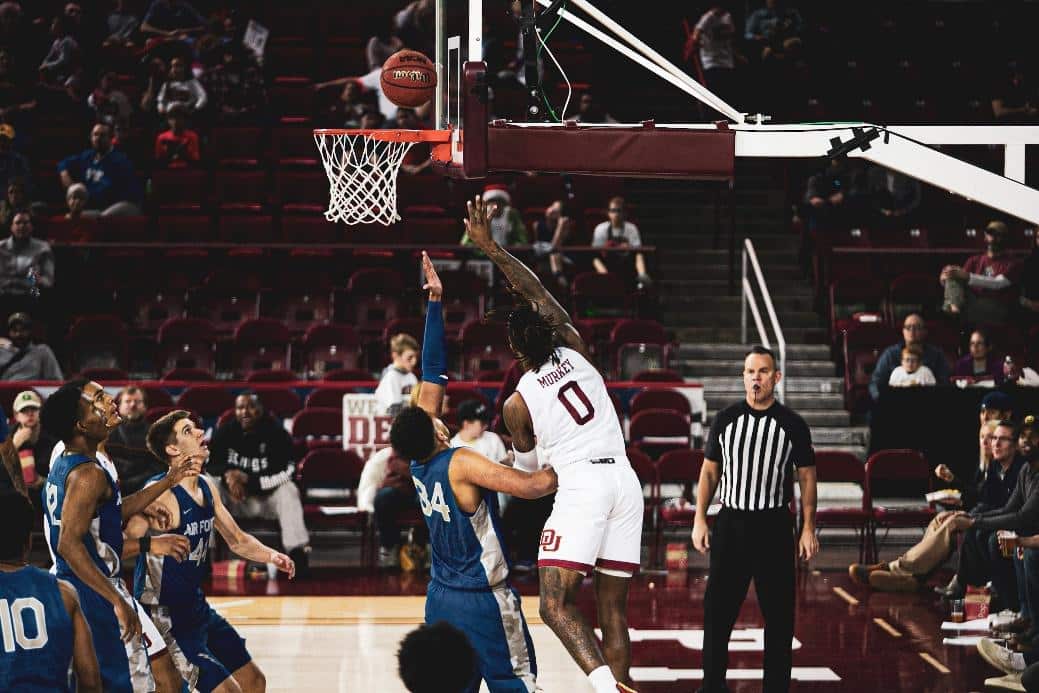
On some occasions, less and less, you can see that an athlete has outstanding strength during strength training, but then is not able to apply it on the field. One of the main reasons this happens is that they don’t train core muscle strength in the same way as the rest of the muscle groups. If our basketball player has an unstable body state during movement they will not be able to transfer functional strength in the same way as if they had a stable state (A. T. Scanlan et al., 2012).
In upper body training for basketball, improving core strength is a crucial requirement. When a player accelerates, brakes, changes direction, changes body direction, jumps, absorbs the fall, shoots for the basket, delivers a pass, blocks another player, etc., he is employing the principle of the power chain in which each body part involved is linked together, like links in a chain (Luo et al., 2023). The core is the main anatomical and functional center from where all movements originate and are transmitted to the limbs (LS & P, 2005). Therefore, core training is necessary to increase force transfer and coordinate the use and management of muscles during functional activities such as basketball-specific sports skills.
When it comes to improving strength in upper body training for basketball we can divide exercises into two main groups: core stability exercises and core strength exercises (Hibbs et al., 2008). Core stability training employs static or slow movements. On the other hand, core strength exercises employ resistive and dynamic movements and are a realistic and safe way to improve fitness (i.e., flexibility and strength) and ability (i.e., coordination, balance, and speed). Athletes require intensive exercises due to the increased physical demands of competitive sports, so we will perform movements with high loads for this.
However, core stability training is also vital for improving the ability of the central nervous system to regulate muscle coordination and, therefore, movement efficiency (Comerford & Mottram, 2001). Therefore, athletes’ core training programs should include both core stability training at low loads and core strength training at high loads. To this, we must add the role of a strong core musculature in protecting players from injuries, such as back problems and many others (Luo et al., 2023).

Best Velocity Based Training Devices – Full Review 2025
Central Stability
Core stability exercises are based on the well-known front and side planks, as well as exercises with low loads and slow movements such as ‘bird dog’, ‘dead bug’, and similar movements. These exercises, if performed on unstable surfaces, such as Swiss balls, increase the proprioceptive demands of the exercises contributing to the proper execution of the movement in basketball (Hibbs et al., 2008). Making use of a fit-ball or other unstable and slippery materials, we can do ‘sir the pot’, ‘body saw’, and movements in which we have to hold the position or move the limbs slowly while the trunk remains stable.
Central Force
Core strength for basketball is trained with higher loads and speeds than core stability movements. This group of exercises fits medicine ball throws and tasks that challenge our trunk in extension, flexion, and rotation (Hassan et al., 2023). With this upper body training, we will be looking for all the muscle groups to work as one as they are connected by the core zone. The list of rotation exercises is long, but we can perform pure trunk rotation with ‘3D Strap Explosive Thoracic Rotation‘, introduce jumps with rotation as ‘lateral to medial jump‘, or perform well-known rotation exercises such as ‘woodchop‘ and its variants.
In basketball, it is common to make use of the anterior cross-chain, which is the one that connects the left lower body to the right side of the trunk, and the right lower body to the left side of the trunk. If this anterior cross chain is well synchronized, the physical performance of our athlete will be much higher (Hassan et al., 2023). Exercises that work the anterior cruciate hip are those that work the opposite hand and leg such as: ‘Lateral Band Squat w/ Pallof Press‘, ‘Cable Split Squat w/ Straight 1-Arm Pull Down‘, ‘Cable Mid 180 1-Arm Press w/ Hand-Off‘, ‘single arm dumbbell bench press‘ and other variants of rotational exercises.
Medicine ball throws cannot be missing in our upper body training for basketball (Hassan et al., 2023). These throws can be frontal from the chest: seated, kneeling, standing with momentum, among others; overhead: kneeling, standing with momentum, among others; and lateral to work the rotational movement: semi-kneeling, standing, among others.
Strength & Power Exercises for Basketball

Basketball has several key actions that are performed with the hands such as passing and shooting. Giving a tense pass at maximum speed will prevent the defender from intercepting it and arming the arms for the shot with maximum acceleration will not give the defender time to block us. The same happens when we want to block an opponent or intercept a pass, so we must train the agility and speed at which we move our arms, as well as the power with which we are able to pass the ball.
Maximum upper body power and the ability to produce high rates of force development are important for athletes in many sports such as rugby, basketball, boxing, and martial arts, where the ability to pass quickly, push or punch opponents, is of paramount importance (Matthews et al., 2009). The scientific literature has proven how an upper body strength training program makes us throw a medicine ball faster and farther (Santos & Janeira, 2012), so we will achieve the same with a basketball.
Bench Press: Elevating Passing Effectiveness in Sports
In practice, upper body training for basketball involves sets of exercises in which a traditional strength movement is followed by a biomechanically similar power exercise. This leads to improved performance of the lighter posterior set over and above that which would occur without the heavy anterior resistance set (Baker, 2003). The quintessential classic strength exercise for the basketball pass is the bench press, as it simulates a horizontal push in which the ball exits from the chest to a teammate (Gonzalo-Skok et al., 2014).
We would first perform bench presses with high loads and low speeds, and then also perform the same movement with medium and low loads so that the speed increases each time. In the case of bench press, the exercises to be performed would be bench press with high load and low speed; bench press with medium loads and medium speed; bench press with low loads, plyometric push-ups, and front throws of a medicine ball (seen in the section on core strength).
Enhance Your Basketball Shooting Speed with Military Press & Landmine Press
When shooting at the basket, the gesture follows an oblique trajectory that can be trained with a landmine press following the same dynamics as above: landmine press with high load, landmine press with medium loads, landmine press with low loads, and throwing a medicine ball with a diagonal vector (seen in the section on core strength). The military press would be the third strength exercise that directly affects specific basketball gestures, and we will train it in the same way as the previous ones, varying the load and speed, starting with a heavy military press and finishing with vertical throws with a medicine ball, passing through the military press with medium loads and military press launched on a Smith machine.
By working with this sequence of exercises and modifying the loads and speeds, we attack the different zones of the strength-speed curve. The throwing of a medicine ball will be a biomechanical movement very similar to the sport’s gesture. The plyometrics used in exercises such as the landmine press by throwing and picking up the bar will allow us to apply more force in less time, which is known as an increase in maximal force development (RFD) (Gonzalo-Skok et al., 2014). As the load increases and the speed at which it moves decreases, we work more on fundamentals and neural enhancements.
Unlock Maximum Training Benefits with Velocity-Based Training (VBT)
The velocity should always be the maximum that the athlete can develop, regardless of the load lifted. To measure it there are devices such as the Vitruve encoder that give us the speed data, as well as other related data (fatigue, range of motion, etc.). With this data, we can perform upper body training for basketball in a much more accurate and higher quality by making each repetition executed at the maximum possible velocity, which then will be transferred into a higher performance in specific gestures of basketball.
Olympic Lifts: Movements With High Loads & Velocities
In addition to some plyometric exercises discussed above such as plyometric push-ups, there are the movements considered the kings of power: the Olympic lifts. From the complete lifts, ‘snatch‘ and ‘clean & jerk‘ to all their variants, they are interesting exercises to improve the application of strength in basketball gestures. The advantage of the Olympic lifts is that they are associated with jumping more, accelerating more, changing direction faster, and arming faster (Garcia-Carrillo et al., 2023; Morris et al., 2022). The problem is that they need a lot of learning time if the athlete has not been taught in lower categories. However, in those cases it is possible to perform variants of the Olympic lifts that are much easier: ‘single arm snatch‘, ‘power snatch‘, ‘power clean‘, and many others.
Biceps and Triceps as Synergist Muscles
When flexing and extending the elbows, the biceps and triceps have a leading role, so they should also be worked, although with a lower volume. There are dozens of exercises for these muscle groups, so it will be enough to choose the basics like the biceps curl and the French press, and add some extra exercise depending on the volume dedicated to these two muscle groups.
Utilizing Compensatory Training for Enhanced Basketball Performance and Injury Prevention
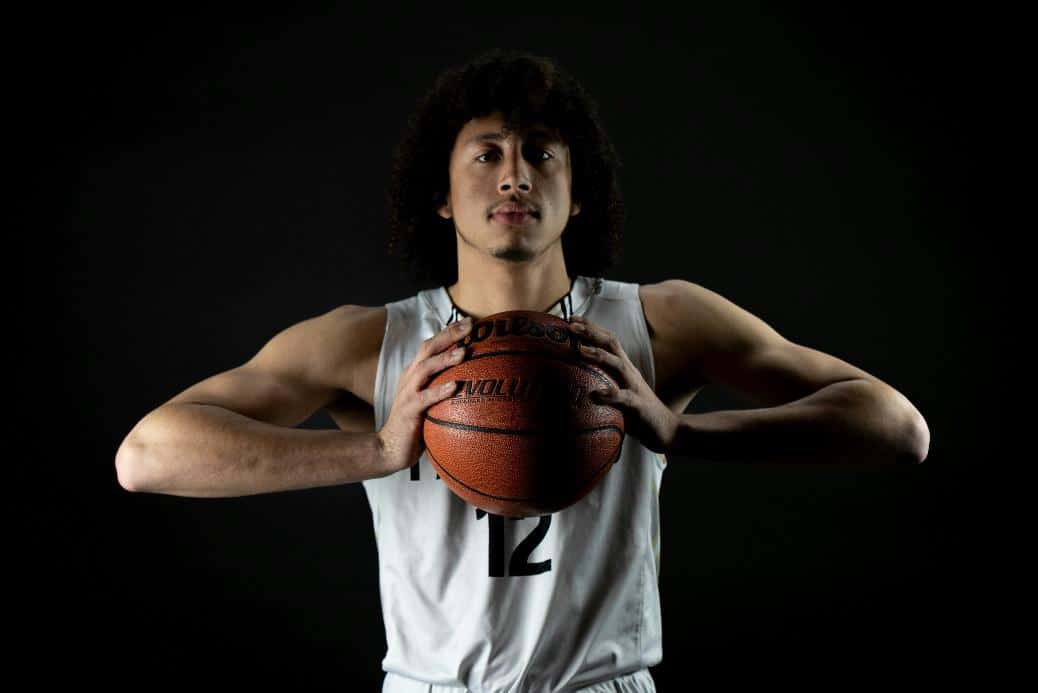
Basketball, like many other sports, primarily involves pushing movements. When we dribble, we exert force downward onto the ball against the floor; when we pass, we propel the ball forward; and the same applies to shooting. Additionally, the position of the arms typically involves shoulder flexion, whether it’s raising our arms forward to defend, steal a ball, or block. Considering that most recommended strength exercises also involve pushing movements, it becomes evident that we need to balance this with the opposite motion: pulling exercises.
Pulling exercises that will most benefit the health of the basketball player’s shoulders, and that will serve both to avoid injury and to improve performance are rowing. The three rowing movements that cannot be missing in our upper body training for basketball are inverted rowing, barbell rowing, and face rowing. In addition, external shoulder rotation work will also be part of the strategy to take care of shoulder health. Exercises such as shoulder rotations with an arm abduction of 30º, or the well-known 90 / 90 rotations will be very useful to take care of the health of the shoulders, which always work in internal rotation when we throw, so we will have to compensate with these external rotations.
Shoulders: The Complex Joint That Requires Both Mobility and Stability Simultaneously
The shoulders have very complex joints that must give us mobility to be free to move our hands, but also stability when necessary. The compensatory work to be introduced in the upper body training for basketball should contain mobility exercises such as ‘3D strap quadruped thoracic spine mobility‘ which consists of performing thoracic rotations with a band placed on the shoulder joint or movements such as ‘Side Lying Thoracic Rotation‘ and ‘sleeper stretch‘.
As for shoulder stability, we can not miss in the backpack of exercises the ‘isometric prone “Y” with perturbations‘ with which we will achieve stability of shoulders and scapulae, which will be directly transferred to better health of shoulders, in addition to greater muscle activation and strength development (Kibler & Sciascia, 2019). We can perform many others such as ‘prone snow angels‘ or shoulder stability work on a fit ball.

Best Velocity Based Training Devices – Full Review 2025
Sample Upper Body Training Program for Basketball Players
It is impossible to propose an upper body training for basketball that is useful at a general level, which is why up to now we have been describing the demands at the upper body level of this sport, but not elaborating a training plan as such. In the scientific literature, some generic options can serve as a guide to see the theory of this article applied. One of them is the following table in which we can see how strength and power exercises, core strength movements, and compensatory work are included in three blocks: stabilization, strength, and power (Arede et al., 2019).
In addition to squaring the best exercises for each day, we will have to take into account the match days if we are in season. In the table, five training days are proposed, located between two matches (MD is the acronym that alludes to ‘match day’). This and other reasons make it impossible to establish a general program, but we can rely on the theory of our article and the following practical proposal to design upper-body training for basketball, which of course will be raised in conjunction with the lower-body and aerobic endurance work.
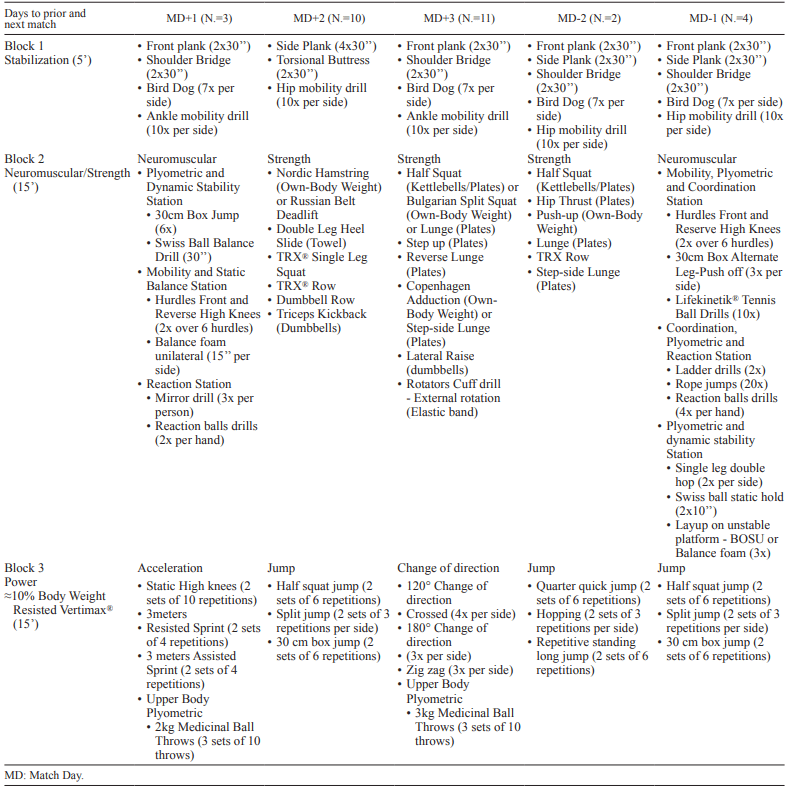
Table from (Arede et al., 2019)
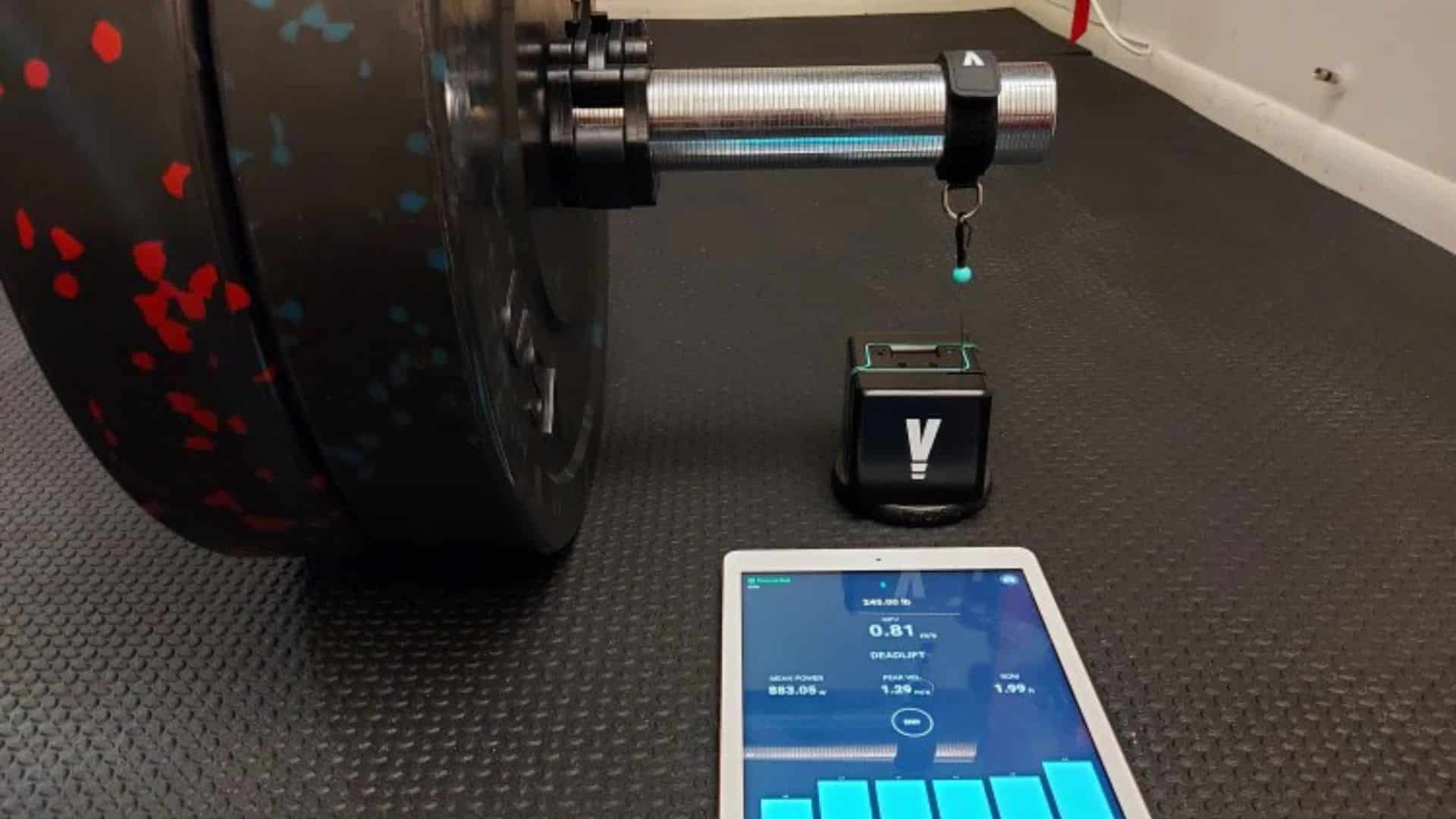
1RM Calculator
References
Arede, J., Vaz, R., Franceschi, A., Gonzalo-Skok, O., & Leite, N. (2019). Effects of a combined strength and conditioning training program on physical abilities in adolescent male basketball players. The Journal of Sports Medicine and Physical Fitness, 59(8), 1298–1305. https://doi.org/10.23736/S0022-4707.18.08961-2
Baker, D. (2003). Acute Effect of Alternating Heavy and Light Resistances on Power Output During Upper-Body Complex Power Training. National Strength & Conditioning Association J. Strength Cond. Res, 17(3), 493–497.
Comerford, M. J., & Mottram, S. L. (2001). Movement and stability dysfunction–contemporary developments. Manual Therapy, 6(1), 15–26. https://doi.org/10.1054/MATH.2000.0388
Garcia-Carrillo, E., Ramirez-Campillo, R., Thapa, R. K., Afonso, J., Granacher, U., & Izquierdo, M. (2023). Effects of Upper-Body Plyometric Training on Physical Fitness in Healthy Youth and Young Adult Participants: A Systematic Review with Meta-Analysis. Sports Medicine – Open, 9(1), 1–19. https://doi.org/10.1186/S40798-023-00631-2/TABLES/5
Gonzalo-Skok, O., Tous-Fajardo, J., Arjol-Serrano, J. L., & Mendez-Villanueva, A. (2014). Determinants, reliability, and usefulness of a bench press repeated power ability test in young basketball players. Journal of Strength and Conditioning Research, 28(1), 126–133. https://doi.org/10.1519/JSC.0B013E3182986C1F
Hassan, A. K., Bursais, A. K., Alibrahim, M. S., Selim, H. S., Abdelwahab, A. M., & Hammad, B. E. (2023). The Impact of Core Complex Training on Some Basketball-Related Aspects of Physical Strength and Shooting Performance. European Journal of Investigation in Health, Psychology and Education, 13(9), 1624. https://doi.org/10.3390/EJIHPE13090118
Hibbs, A. E., Thompson, K. G., French, D., Wrigley, A., & Spears, I. (2008). Optimizing performance by improving core stability and core strength. Sports Medicine (Auckland, N.Z.), 38(12), 995–1008. https://doi.org/10.2165/00007256-200838120-00004
Kibler, W. Ben, & Sciascia, A. (2019). Evaluation and Management of Scapular Dyskinesis in Overhead Athletes. Current Reviews in Musculoskeletal Medicine, 12(4), 515–526. https://doi.org/10.1007/S12178-019-09591-1
LS, B., & P, T. (2005). Core stability: the centerpiece of any training program. Current Sports Medicine Reports, 4(3). https://doi.org/10.1007/S11932-005-0064-Y
Luo, S., Soh, K. G., Zhao, Y., Soh, K. L., Sun, H., Nasiruddin, N. J. M., Zhai, X., & Ma, L. (2023). Effect of core training on athletic and skill performance of basketball players: A systematic review. PLOS ONE, 18(6). https://doi.org/10.1371/JOURNAL.PONE.0287379
Matthews, M., O’Conchuir, C., & Comfort, P. (2009). The acute effects of heavy and light resistances on the flight time of a basketball push-pass during upper body complex training. Journal of Strength and Conditioning Research, 23(7), 1988–1995. https://doi.org/10.1519/JSC.0B013E3181B3E076
Morris, S. J., Oliver, J. L., Pedley, J. S., Haff, G. G., & Lloyd, R. S. (2022). Comparison of Weightlifting, Traditional Resistance Training and Plyometrics on Strength, Power and Speed: A Systematic Review with Meta-Analysis. Sports Medicine (Auckland, N.z.), 52(7), 1533. https://doi.org/10.1007/S40279-021-01627-2
Nikolaos, K., Evangelos, B., Nikolaos, A., Emmanouil, K., & Panagiotis, K. (2012). The effect of a balance and proprioception training program on amateur basketball players’ passing skills. Journal of Physical Education and Sport, 12(3), 316–323. https://doi.org/10.7752/JPES.2012.03047
Petway, A. J., Freitas, T. T., Calleja-González, J., Leal, D. M., & Alcaraz, P. E. (2020). Training load and match-play demands in basketball based on competition level: A systematic review. PLoS ONE, 15(3). https://doi.org/10.1371/JOURNAL.PONE.0229212
Reed, C. A., Ford, K. R., Myer, G. D., & Hewett, T. E. (2012). The effects of isolated and integrated “core stability” training on athletic performance measures: a systematic review. Sports Medicine (Auckland, N.Z.), 42(8), 697–706. https://doi.org/10.2165/11633450-000000000-00000
Roman, I. R., Molinuevo, J. S., & Quintana, M. S. (2009). RICYDE. Revista Internacional de Ciencias del Deporte. RICYDE. Revista Internacional de Ciencias Del Deporte, 5(14), 1–10. https://doi.org/10.5232/RICYDE2009.01401
Santos, E. J. A. M., & Janeira, M. A. A. S. (2012). The effects of resistance training on explosive strength indicators in adolescent basketball players. Journal of Strength and Conditioning Research, 26(10), 2641–2647. https://doi.org/10.1519/JSC.0B013E31823F8DD4
Scanlan, A., Dascombe, B., & Reaburn, P. (2011). A comparison of the activity demands of elite and sub-elite Australian men’s basketball competition. Journal of Sports Sciences, 29(11), 1153–1160. https://doi.org/10.1080/02640414.2011.582509
Scanlan, A. T., Dascombe, B. J., Reaburn, P., & Dalbo, V. J. (2012). The physiological and activity demands experienced by Australian female basketball players during competition. Journal of Science and Medicine in Sport, 15(4), 341–347. https://doi.org/10.1016/J.JSAMS.2011.12.008
Stojanović, E., Stojiljković, N., Scanlan, A. T., Dalbo, V. J., Berkelmans, D. M., & Milanović, Z. (2018). The Activity Demands and Physiological Responses Encountered During Basketball Match-Play: A Systematic Review. Sports Medicine, 48(1), 111–135. https://doi.org/10.1007/S40279-017-0794-Z/TABLES/8
